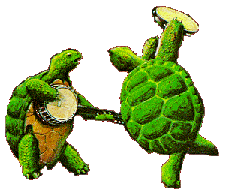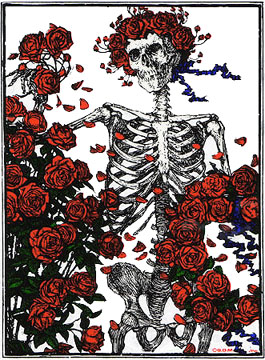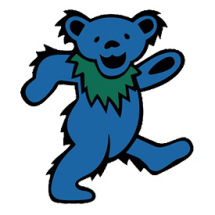 As I alluded to in my discussion of the Grateful Dead’s October 27th show at the Oakland-Alameda County Coliseum, today’s show was an impromptu celebration of the life of Bill Graham, the legendary concert promoter who died on October 25th. It featured a whole manger of performers, but so far as the Dead’s set went, we get to hear the boys play with John Popper (from Blues Traveler), Neil Young (from Neil Young) and John Fogerty. More on this in a minute.
As I alluded to in my discussion of the Grateful Dead’s October 27th show at the Oakland-Alameda County Coliseum, today’s show was an impromptu celebration of the life of Bill Graham, the legendary concert promoter who died on October 25th. It featured a whole manger of performers, but so far as the Dead’s set went, we get to hear the boys play with John Popper (from Blues Traveler), Neil Young (from Neil Young) and John Fogerty. More on this in a minute.
First, we need to briefly discuss Bill Graham and his role in American music. It’s quite the story. Bill Graham, whose real name was Wulf Wolodia Grajonca, was born in Poland, fled the Nazis and immigrated to the US from France as part of the group known as the One Thousand Children, unaccompanied minors who left Europe without their parents. Graham’s mother was killed in the Holocaust. Graham served as a decorated soldier in the Korean War and got into concert promotions after moving to San Francisco in the early 60’s. He was instrumental in establishing the Fillmores (first West and then East) as major venues for the evolving rock scene (the story of how he took over the Fillmore Auditorium in San Francisco is fascinating and a little dicey, as most aspects of concert promotion tend to be) and he later restored Winterland Arena as a San Francisco hot spot for all manner of performers. He promoted all sorts of shows all over the country, although his main base was definitely the West Coast. At one point he managed Jefferson Airplane. And then there was his relationship with the Grateful Dead.
You can tell just by reading the names of the venues that I’ve named above that Bill Graham and the Dead must have had an interesting relationship – they were basically tied together in a psychedelic symbiosis from the very beginning. If you were going to pick someone who would be the opposite of everything Grateful Dead, it would probably be Bill Graham – the only similarity, at first, was that all involved were outsiders. As time went on, that status eroded (to the point where the San Francisco Civic Auditorium is now named after Graham). But at the time, this crew was waging war on the establishment. The difference is that Bill Graham was organized and very good at his job.
There’s so much more to the tale of the Dead and Bill Graham, and I don’t have the time to tell the whole story here, but I think that once particular anecdote will illustrate the relationship. Bill Graham produced the Dead’s legendary New Year’s Eve shows, and every year Graham would emerge in costume as part of the midnight ball drop. It was the only time he was actually part of the act itself, but without him, there likely wouldn’t have been an act at all.
I would be remiss if I didn’t at least describe the way that Graham died: his helicopter flew into power lines on the way back from a Huey Lewis show. Could a legend like Graham’s end any other way?
This finally brings us back to today’s show. The most interesting Dead-specific note from this performance is how well the band’s newest member, the one who had the fewest interactions with Bill Graham, Vince Welnick, plays here. This is a really, really good Vince show – all of his runs fit in exactly where they should, he adds tons of color to the proceedings, and he never steps on anyone’s toes. I won’t insult Vince by saying that for a while I thought he was Hornsby, but . . .
So far as Dead songs go, they actually play well today, all things considered. China Cat Sunflower>I Know You Rider is gloriously funky, and the Other One>Wharf Rat combo is impressive – there is a ton of energy in the air and the band harnesses it through their playing. They play Sunshine Daydream without Sugar Magnolia, maybe a nod to the Sunshine Daydream-less show from the 27th?
But that’s probably not what you’re interested in. What you probably want to know is how well the Dead played with their special guests. Well, Popper did fine during Wang Dang Doodle, but he was just playing harmonica on a Dead song. Neil Young did nifty Neil Young things during Forever Young, but, again, that’s a tune that fits the Dead cannon pretty nicely.
And then there’s Fogerty, who was playing Fogerty songs. With the full Grateful Dead as his backup band. (I have to mention that it’s the full Dead here because Weir and Garcia were part of a team of musicians who backed Forgerty before, at the 1987 AIDS benefit in Oakland, but in that case, Steve frickin Jordan was the drummer and they had the Big Man on sax. Here, it’s just the Dead). I must admit, this worried me a bit, because Fogerty songs require a very straightforward beat. And that’s not Mickey and Billy. You’ll hear what I mean from the start. Fortunately, the boys very quickly learn that the best way to make this partnership work is to just follow whatever John Fogerty does on guitar. Once they dial that in, we get pretty sweet versions of Born On The Bayou, Green River, Bad Moon Rising and Proud Mary. Today was the first and only time the Dead would play these songs and Forever Young live.
This is classic show with some inspired performances during a troubled week for the band. But the music plays the band here in Golden Gate Park and somewhere Bill Graham was probably smiling.
Listen here: https://archive.org/details/gd1991-11-03.153781.mtx.tobin.flac16

 Out in the West Texas town of El Paso, the Grateful Dead played this show on November 23, 1973.
Out in the West Texas town of El Paso, the Grateful Dead played this show on November 23, 1973. According to Deadlists, the Grateful Dead’s official website and several commentators on the Archive, Bill Kreutzmann was sick tonight, leaving Mickey Hart as the band’s sole drummer for possibly the only time in band’s career. However, other Archive folks who say that they attended the show claim that Billy was there. In his book, Phil Lesh describes this show and specifically talks about both drummers. So who is to be believed?
According to Deadlists, the Grateful Dead’s official website and several commentators on the Archive, Bill Kreutzmann was sick tonight, leaving Mickey Hart as the band’s sole drummer for possibly the only time in band’s career. However, other Archive folks who say that they attended the show claim that Billy was there. In his book, Phil Lesh describes this show and specifically talks about both drummers. So who is to be believed? I’m posting this one late, but honestly, there’s not a ton to write about this one – it’s a typical 1985 show, with a hot first set and a gradually disengaged second half.
I’m posting this one late, but honestly, there’s not a ton to write about this one – it’s a typical 1985 show, with a hot first set and a gradually disengaged second half. Here is a good example of a Grateful Dead show where you can get lulled into thinking that the whole night is going to be blase based on the lackluster first set, only to be pleasantly surprised when the band comes roaring out for an inspired effort in the second half of the show.
Here is a good example of a Grateful Dead show where you can get lulled into thinking that the whole night is going to be blase based on the lackluster first set, only to be pleasantly surprised when the band comes roaring out for an inspired effort in the second half of the show.